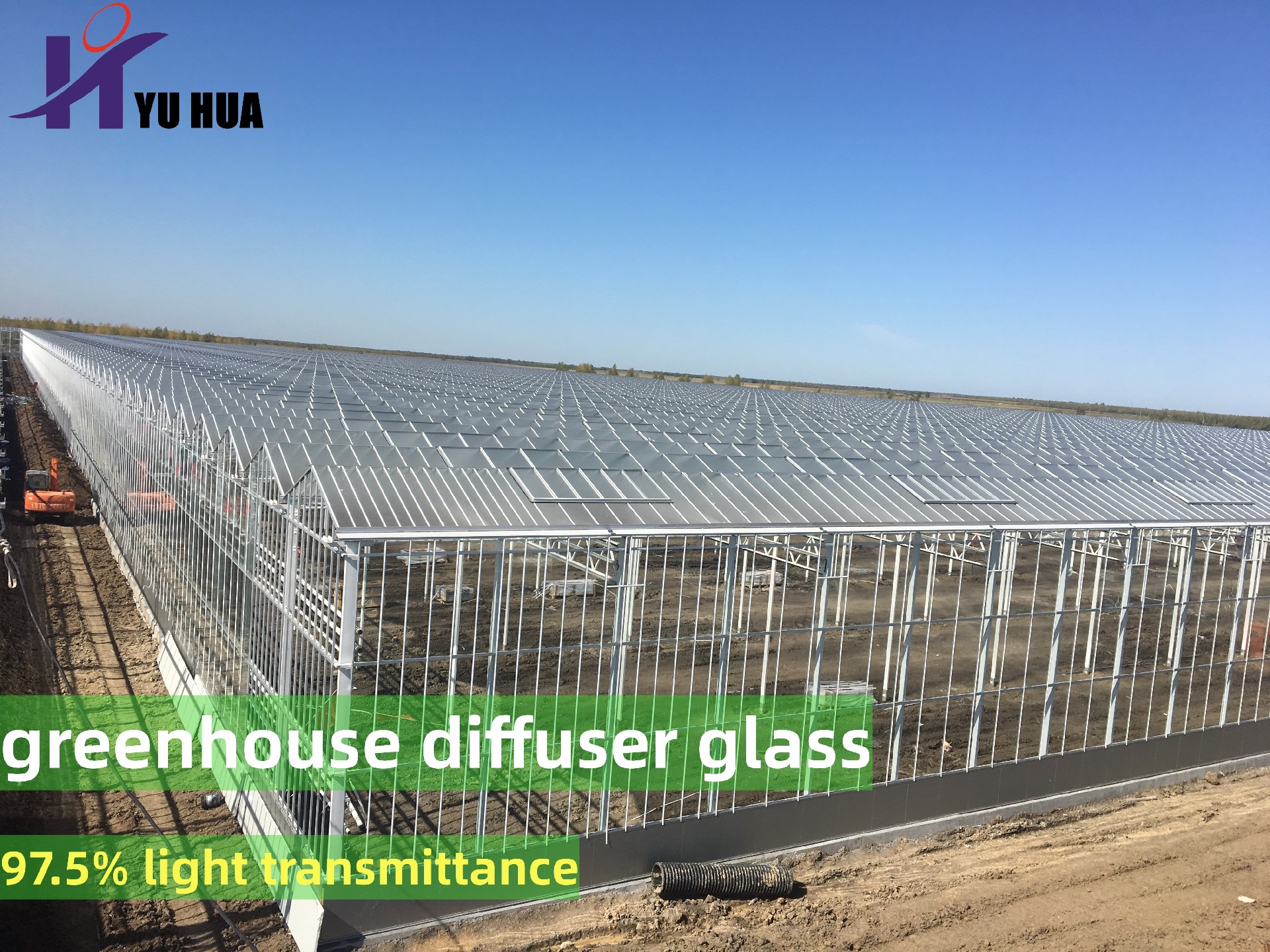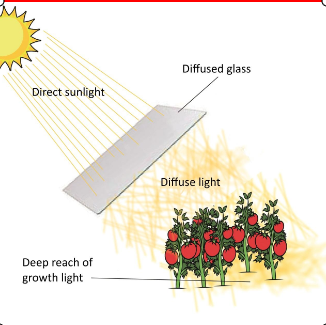
The difference between tempered glass and diffused glass used in greenhouses
At present, with the technological development of the glass greenhouse industry, film greenhouses are gradually being eliminated, solar greenhouses are gradually being replaced, and the total annual construction volume of glass greenhouses is also increasing year by year.

In the construction of glass greenhouses, the glass used in the building mainly includes the side walls and the top. The side walls generally use ordinary float insulating glass. It is recommended to purchase it locally. Ordinary float is fragile and the local purchase price is cheap. And it can avoid the problem of transportation damage.
The other part is the glass on the top of the glass greenhouse, starting from ordinary tempered glass, ultra-white tempered glass, and diffused glass. Since the greenhouse is relatively high, ordinary glass is no longer considered. Let’s focus on the difference between tempered glass and diffused glass.
First of all, glass greenhouse tempered glass refers to ultra-white tempered glass, and scattering glass refers to ultra-white embossed scattering glass. The main differences between tempered glass and ultra-white embossed scattering glass are as follows:
1. Different light transmittances
The light transmittance of ultra-white tempered glass is 90%, and the light transmittance of ultra-white embossed scattering glass is 91.5%. These are two standards.
Why is the transmittance of scattering glass 1.5% higher than the same ultra-white glass? That's because scattering glass is specially developed for agricultural greenhouses. The starting point is light transmittance, and production will take light transmittance as the first criterion. As tempered glass is the glass used in our daily living buildings, safety is the first criterion, so the light transmittance is insufficient.
2. Scattering glass has more advantages than tempered glass
2.1. Scattering characteristics
The biggest feature of scattering glass is its astigmatism properties, which can turn a beam of light into a patch of light. Turn the hard light of the sun into soft light, increasing the illumination area while weakening the light intensity.
Increasing the lighting area can ensure that there are no shadows inside the greenhouse, and the light can be spread in areas blocked by the greenhouse frame walls to ensure uniform lighting in every corner of the greenhouse. The fruits and vegetables grown in this way will not have large or small fruits due to light.
Turning the hard light of the sun into soft light can prevent plant leaves from being burned by light and turning brown in the hot summer. The scattered soft light can lower the leaf surface temperature by about 5 degrees Celsius, which can more directly reduce the cost problems caused by summer cooling in the greenhouse.
2.2, 1.5% light transmittance improvement
What we call a harvest comes with a share of sunshine. Adequate light is a prerequisite for ensuring a good harvest in the greenhouse. A 1.5% difference in light transmission may result in a total yield difference of about 5%.

2.3. Good hydrophobic properties
Since the scattering glass is used on the top of the greenhouse, it is exposed to wind and sun for a long time, and dust accumulation greatly affects the light transmittance. Good hydrophobic properties give glass a certain self-cleaning ability. On average, we have to clean and maintain the greenhouse 5-15 times a year on a regular basis. Some areas with better climate and environment can save more cleaning costs.
2.4. New attribute: haze
Every piece of greenhouse scattering glass produced has haze, which is 0, 10, 20, 30, 50, 70, 75, and 80 respectively. Each type of haze represents a different size of scattering. We can choose different haze types according to local lighting conditions to adjust the amount of light entering the greenhouse.
If the lighting conditions are poor, we can choose low haze. If the lighting conditions are good, we can choose high haze. Choose scattering glass with different haze specifications for growing crops, so that crops can always grow at the point of maximum photosynthesis.
Here is a summary of tempered glass and diffused glass:
What they have in common: They are all tempered, and the original films are made of ultra-white glass.
difference:
1. The light transmittance is different. Scattering glass is 1.5% higher than tempered glass.
2. Scattering is different. Tempered glass does not have scattering properties.
3. Change the light characteristics. Scattering glass can change hard light into soft light, which is not the case with tempered glass.
4. Hydrophobicity does not pass, scattering glass has it, tempered glass does not.
5. The haze characteristics are different. Scattering glass has 8 hazes, and tempered glass has 0 hazes.
Tags:anti-reflective glass diffuse glass agricultural greenhouses glass greenhouse venlo greenhouse AR glass greenhouses glass agricultural glass horticultural glass #greenhouseglass #Antireflectiveglass #Diffusetemperedglass #Ultrawhitefloatglass #agriculturalgreenhouseglass #diffuseglass #horticulturalglass #Tomatogreenhouse #Coloredpeppergreenhouse #Lettucegreenhouse #Agriculturalgreenhouse #ARglass #venlogreenhouse #greenhouseglass #Antireflectiveglass #Diffusetemperedglass #Ultrawhitefloatglass #agriculturalgreenhouseglass #diffuseglass #horticulturalglass #Tomatogreenhouse #Coloredpeppergreenhouse #Lettucegreenhouse #Agriculturalgreenhouse #ARglass #venlogreenhouse #GlassManufacturer #invernadero #ArchitecturalGlass #ClearFloatGlass #FloatGlass
Previous:Warmly welcome Van der Hoeven to visit Yuhua Greenhouse Glass Factory.
Next:Four major uses of diffused glass for glass greenhouses



















